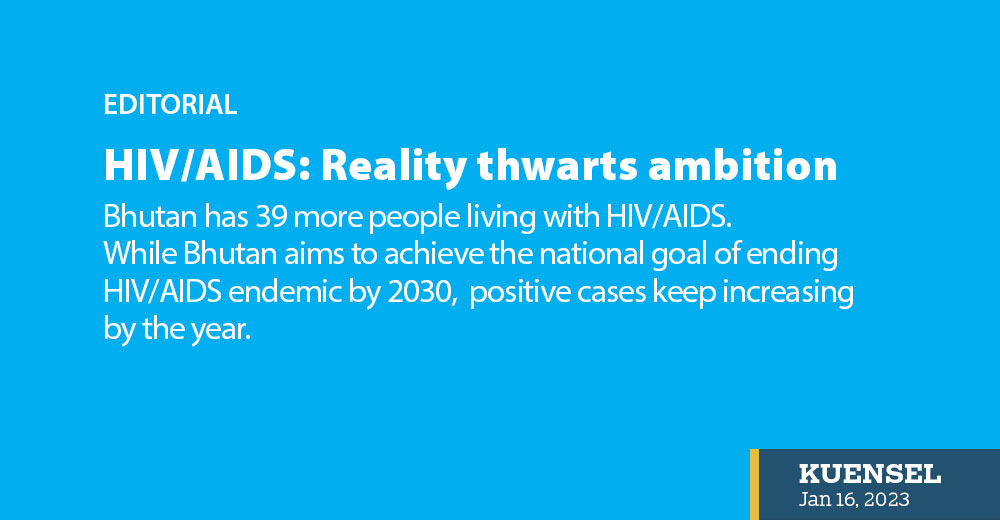Bhutan has 39 more people living with HIV/AIDS.
While Bhutan aims to achieve the national goal of ending HIV/AIDS endemic by 2030, positive cases keep increasing by the year.
Since the detection of the first case in the early 1990s, we now have 660 people living with HIV/ADIS.
Health Minister Dechen Wangmo said that the current number is one of the highest in 12 months so far.
The question is: Are we doing enough to address the issue? Are we not forgetting the 2030 ambition in the midst of new and emerging health challenges?
Fighting HIV/AIDS remains a formidable challenge.
By now we know well enough about HIV/AIDS and the modes through which the disease can be transmitted. However, despite relentless awareness programmes, unprotected sex remains the principal mode of transmission in Bhutan.
Eight cases were detected through voluntary counselling and testing, and six through contact tracing. Instead of leaving it all up to our “Gyenkhu”, which could be defined in ways more than one, focusing on effective methods should be the focus of the ministry.
Health Minister said that the numbers of HIV/AIDS detection indicate that people are taking responsibility to come forward to test their status. We cannot just deduce and interpret the numbers and causes. There is a need to address the gaps that give rise to such unprecedented numbers.
We know that testing is made more accessible in all the health facilities, community-based HIV self-testing and outreach services. Lyonpo said that all expecting parents must undergo two-time testing during pregnancy check-ups to ensure the triple elimination of mother-to-child transmission of HIV, congenital syphilis, and hepatitis B.
There is a need to rethink our strategies and approach. Where are we falling short? The answers must be found. The rising number of positive cases cannot be attributed to accessibility to testing facilities alone.
Health officials say that while efforts are being made to bridge the detection gap, the progress is slow—with over 600 undetected cases, the detection gap is alarmingly high.
It is believed that Bhutan could have more than 1,300 positive cases; the current ballpark figure of positive cases could be far too less.
The initiative, priority, and pace given, there is the potential to help many of those unreached key and vulnerable groups and individuals with greater access to HIV testing services.
We have testing services in all healthcare facilities in the country, including private clinics. But there is so much we can and, must, do.
Close to 70 percent of HIV cases in Bhutan are among the economically productive age group—25 to 49. This could, in the long run, have an adverse impact on the health and economy of the country.
Solution: Creative promotion of safe sex and condom use must receive a renewed drive.


